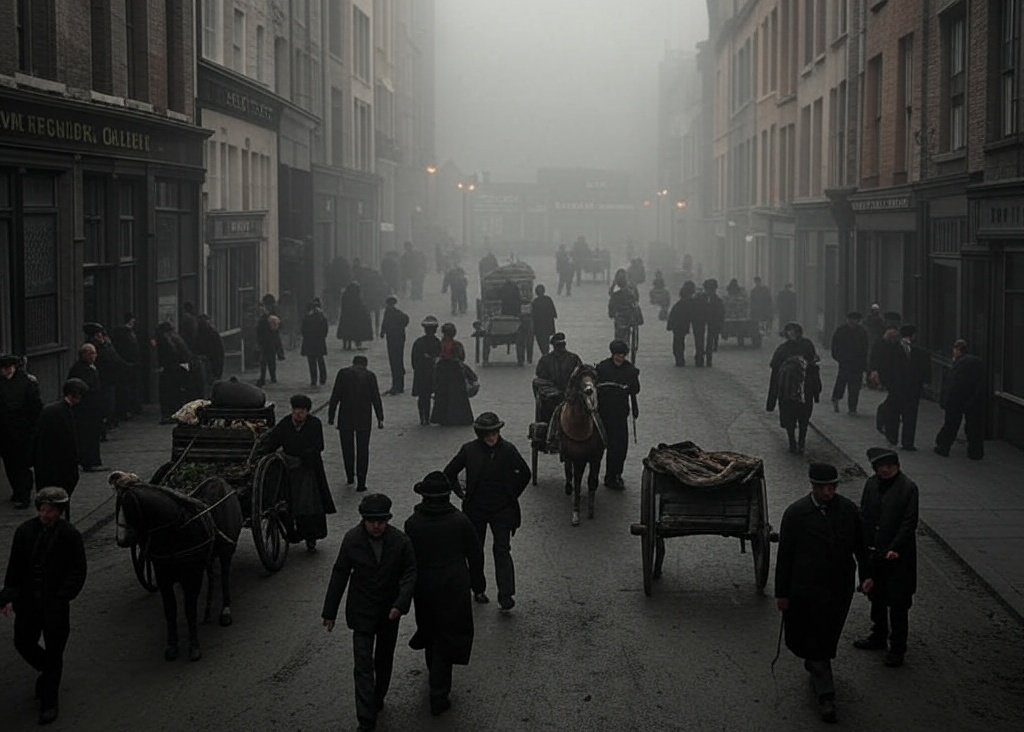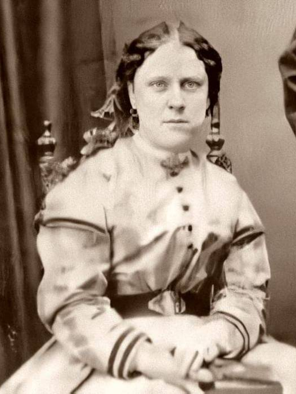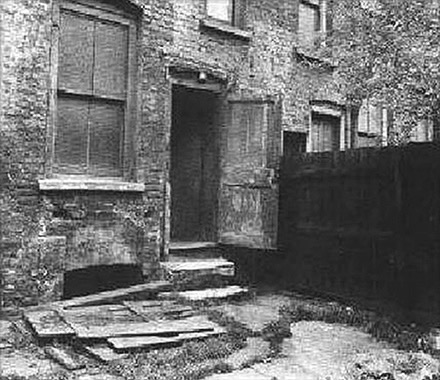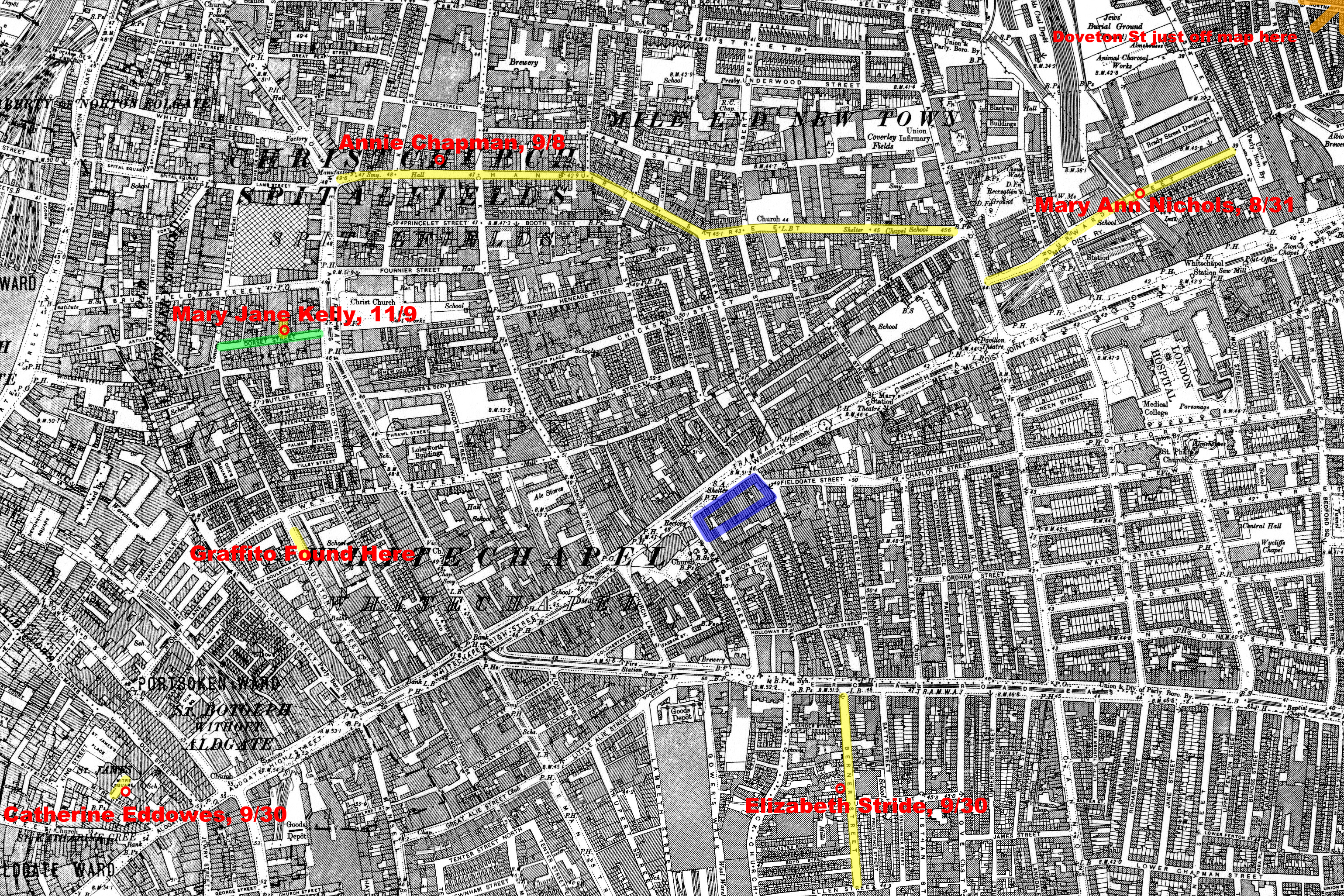Unmasking Jack the Ripper: A Fresh Investigation into the Whitechapel Murders, Part 3
Posted on 05/26/2025 at The Curmudgeon’s Chronicle

The Second Murder – Annie Chapman and the Suspect Field
Eight days after Mary Ann Nichols’ lifeless body was found in Buck’s Row, the East End of London was still reeling. The newspapers buzzed with grim details of her murder, but for most, it was just another tragedy in a district where death was a frequent visitor. The police had no leads, no suspects – just a cold trail and a growing unease. Whitechapel’s residents went about their lives, unaware that a predator was still among them, his appetite for violence far from sated. On September 8, 1888, in the cramped backyard of 29 Hanbury Street, that predator struck again, claiming his second victim: Annie Chapman.
In this third part of our investigation, we’ll step into the early morning hours of September 8 and examine the brutal murder of Annie Chapman, a killing that confirmed a horrifying pattern – a serial killer was stalking Whitechapel. Using only 1888 evidence – police reports, inquest testimony, and contemporary accounts – I’ll evaluate our four suspects: Charles Cross, Joseph Barnett, Aaron Kosminski, and David Cohen. Each man has ties to the East End, but who fits this crime? I’ll assign probabilities for Chapman’s murder and adjust their overall likelihood of being Jack the Ripper, building toward my final reveal in a later part. For now, let’s walk the streets of Spitalfields and uncover the next piece of this bloody puzzle.
The Murder of Annie Chapman
Annie Chapman, known as “Dark Annie,” was 47 years old, a widow who had turned to prostitution to survive after her husband’s death in 1886. Standing at 5 feet tall, stout, with dark brown hair and blue eyes, she was a familiar face in Whitechapel’s pubs like the Ten Bells and Britannia. By 1888, her health was failing – malnutrition and lung issues plagued her – but she still worked the streets to afford a bed in doss-houses like 35 Dorset Street (inquest, September 10, 1888). On September 7, Chapman was kicked out of her lodging at 1:00 a.m. for lack of 4d (Timothy Donovan, inquest). She told a friend, Amelia Palmer, she’d “be back” with money, likely soliciting clients on Hanbury Street, her usual patch.

Annie Chapman
At 6:00 a.m. on September 8, John Davis, a tenant at 29 Hanbury Street, found Chapman’s body in the backyard – a cramped space, 14 by 12 feet, enclosed by a 5’6” wooden fence with an unlocked passage to the street. Her throat had been slashed twice, left to right, nearly severing her head – Dr. George Bagster Phillips, who examined her at 6:30 a.m., noted the cuts were “expertly done” (inquest, September 13). Her abdomen was slit open, intestines pulled out and draped over her right shoulder, and her uterus, portions of her reproductive organs, and parts of her bladder had been removed with chilling precision. Bruises on her face and chest suggested a pre-death struggle, and a handkerchief was tied around her throat post-mortem, possibly to control blood. There were no screams – Chapman had been silenced quickly.
The timeline is tight, pieced together by witnesses. At 5:30 a.m., Elizabeth Long saw a woman she identified as Chapman at the passage to 29 Hanbury Street, speaking with a man – over 40, slightly taller than Chapman, with a “shabby-genteel” appearance, wearing a brown deerstalker hat and possibly a dark coat. “Will you?” he asked. “Yes,” she replied, as they stood outside No. 29 (inquest). Long didn’t see his face, only noting his dark complexion. Around 5:20 a.m., Albert Cadosch, a neighbor at No. 27, heard a woman say “No!” followed by a thud against the fence – he thought it was a scuffle and didn’t check, distracted by his own health troubles (inquest). John Richardson had checked the yard of No. 29 between 4:45 and 4:50 a.m., sitting on the steps to trim his boot, and saw nothing – perhaps the darkness or the fence’s angle hid Chapman’s body (inquest). Dr. Phillips estimated death at 4:30 a.m. or earlier, based on the body’s coldness and early rigor, though he noted the chilly morning might have accelerated cooling (inquest). Coroner Wynne Baxter, favoring the witnesses, set the time at 5:30 a.m.
Inspector Joseph Chandler of H Division arrived at 6:10 a.m., cordoning off the yard (MEPO 3/140). There was no weapon, just blood on the fence and a handkerchief tied around Chapman’s throat – no screams, no witnesses to the act itself. Phillips noted the injuries showed greater anatomical skill than Nichols’ murder, with organs removed in “one sweep of the knife” (inquest). Coroner Wynne Baxter noted the similarities to Nichols, suggesting the same killer was at work. The police questioned tenants and locals, but the trail went cold. Chapman’s murder wasn’t just a killing – it was a message. A killer was evolving, and Whitechapel was his hunting ground.

Back steps of 29 Hanbury Street: Annie Chapman’s body found against the fence, just below the steps.
The Suspect Field: Who Fits This Crime?
With Chapman’s murder confirming a pattern, let’s evaluate our four suspects – Charles Cross, Joseph Barnett, Aaron Kosminski, and David Cohen – to see who fits this chilling crime. Using only 1888 evidence, I’ll explore their proximity to the scene, their opportunity to kill, and how well they match the evidence we have. At the end of each suspect’s analysis, I’ll assign a likelihood for Chapman’s murder and an overall probability for the series, just as I did for Nichols, where Cross emerged as a strong contender due to his undeniable presence at the scene. Let’s step back into the shadows of Hanbury Street and see who might have been waiting there.
- Charles Cross (aka Charles Lechmere): Cross, 39, lived at 22 Doveton Street, 0.8 miles from Hanbury Street – a route that likely took him near the crime scene on his way to work at Pickfords on Broad Street, 1.5 miles away, given his early start between 4:00 and 6:00 a.m. The timing aligns: Chapman was killed at 5:30 a.m., according to Coroner Wynne Baxter’s conclusion, and Cross, an early riser who found Nichols at 3:40 a.m., could easily have been passing through on his way to work. Elizabeth Long’s description of a “shabby-genteel” man, over 40, slightly taller than Chapman, wearing a brown deerstalker hat, aligns with Cross’s age and build, though the hat doesn’t match later witness descriptions, like the “sailor-like” man seen before Eddowes’ murder. Nichols’ crude cuts contrast with the precision of Chapman’s mutilations, but this could indicate a killer learning as he goes. Cross, a carman with no flesh-cutting trade, might have been honing his craft, progressing from Nichols to Chapman. His calm demeanor at Nichols’ scene – examining her, waiting for Paul, reporting to Mizen, and heading to work without distress – matches the control needed here, as no screams were heard despite the busy tenement around Hanbury Street. Cross’s proximity, timing, and behavior make him a compelling figure in this murder. I assign him a 55–60% likelihood for Chapman’s murder, maintaining his 75–80% for Nichols, with an overall probability of 40–45% for the series – he’s a strong contender.
- Joseph Barnett: Barnett, 30, lived on Dorset Street, a mere 0.3 miles from Hanbury Street – closer than Cross’s home and squarely in the heart of the East End’s underbelly. As a fish porter working early hours at Billingsgate Market, just a mile away, he could easily have been in the area during the pre-dawn hours when Chapman was killed. But Barnett has no known connection to Chapman – there’s no evidence tying him to this victim, and his motive in the Ripper case, tied to his lover Mary Jane Kelly, emerges later with her murder in November. His skills as a fishmonger mean he knew his way around a knife, capable of precise cuts that align better with Chapman’s mutilations than Nichols’ cruder slashes, but this precision doesn’t fit a man whose apparent anger was directed at Kelly, driven by jealousy over her prostitution. The police heavily scrutinized Barnett after Kelly’s death in November, clearing him of suspicion, which suggests they saw no broader connection to earlier murders like Chapman’s (MEPO 3/140, November 10, 1888). While his proximity keeps him in the frame, the lack of a personal link to Chapman weakens his case. I give Barnett a 30–35% likelihood for Chapman’s murder, with an overall probability of 25–30% for the series – he’s on the back burner for now.
- Aaron Kosminski: Kosminski, 23, lived in Sion Square, 0.5 miles from Hanbury Street – the same distance as Cross’s mother’s former home – placing him right in the murder zone. As an unemployed barber known to wander the streets, according to later asylum records, he could have been roaming Whitechapel in the early hours when Chapman was killed at 5:30 a.m. – a time that aligns with his nocturnal patterns, as we’ll see with Eddowes’ murder at 1:35 a.m. Long’s description of a “shabby-genteel” man, over 40, doesn’t quite fit Kosminski – he was younger, 23, and 5’5”, though his “Jewish” appearance might match broader witness profiles, like the man who shouted “Lipski” before Stride’s murder. Kosminski’s alleged madness, noted in 1891 asylum records and later by Sir Melville Macnaghten as “homicidal tendencies,” could explain the savagery of Chapman’s mutilations. Like Cross, he had no flesh-cutting trade, which matches Nichols’ crude start, and Chapman’s murder might show a learning curve as the killer refined his method. But there’s no 1888 record placing him at the scene – police files don’t mention him, and his “suspect” status comes from hindsight, with Chief Inspector Donald Swanson naming him in 1910. Kosminski’s proximity and the madness angle make him a contender, but the lack of direct evidence leaves questions. I give Kosminski a 55–60% likelihood for Chapman’s murder, with an overall probability of 35–40% for the series – he’s viable but shaky.
- David Cohen: Cohen, 23, was admitted to Colney Hatch Asylum in December 1888, just after the murders ended, with a possible address at Mile End Workhouse, 1–1.5 miles from Hanbury Street – a less precise location than the others. Some historians, like Martin Fido in 1987, link him to “Nathan Kaminsky,” a syphilitic Jew treated in Whitechapel in 1888, possibly living at Black Lion Yard, 0.5 miles from the scene, but there’s no 1888 record to confirm this. Cohen’s “violent, noisy” behavior in the asylum fits the savagery of Chapman’s murder, but like Kosminski, he had no trade involving flesh-cutting, and his timeline is late, starting after Kelly’s murder. There’s no evidence placing him at the scene, and his profile largely echoes Kosminski’s, suggesting he might be a variant of the same suspect. Cohen’s distance and lack of confirmed presence make him a long shot for this crime. I assign Cohen a 30–35% likelihood for Chapman’s murder, with an overall probability of 25–30% for the series – he’s on the back burner.

Map of Whitechapel: Highlights Annie Chapman's body location and Hanbury Street among various marked spots.
A Pattern Emerges
Chapman’s murder marked a turning point. Nichols’ killing was brutal but crude; Chapman’s showed a killer refining his craft – organs taken, precision evident. The police began to connect the dots, and Whitechapel’s residents felt the first stirrings of panic. A serial killer was at work, and he was escalating.
Cross and Kosminski lead the pack for Chapman – both at 55–60% – due to their proximity (Sion Square, 0.5 miles) and fit with the crime’s evolution. Cross’s presence at Nichols’ scene gives him an edge, while Kosminski’s madness makes him a contender, though his lack of 1888 evidence holds him back. Barnett and Cohen lag – proximity helps, but no direct ties (30–35% each). For the all-five series, Cross is at 40–45%, Kosminski at 35–40%, with Barnett and Cohen at 25–30% – the field is narrowing.
But the killer wasn’t done. Three weeks later, he would strike twice in one night, plunging Whitechapel into a new level of terror. The double event – Elizabeth Stride and Catherine Eddowes – is next, and it will test our suspects like never before.
Does Cross’s proximity to Hanbury Street make him the killer, or is Kosminski’s madness a better fit? Share your thoughts in the comments below, and join me next time as we dive into the double event – two murders in one night, and a suspect showdown.